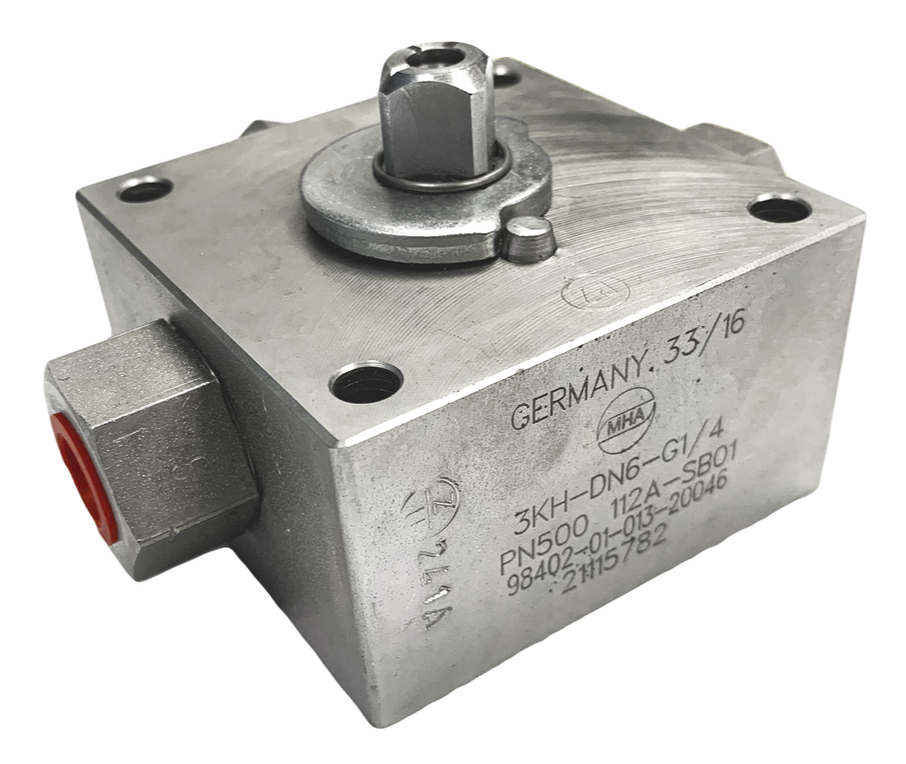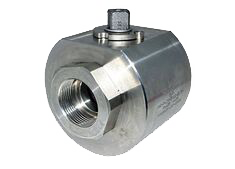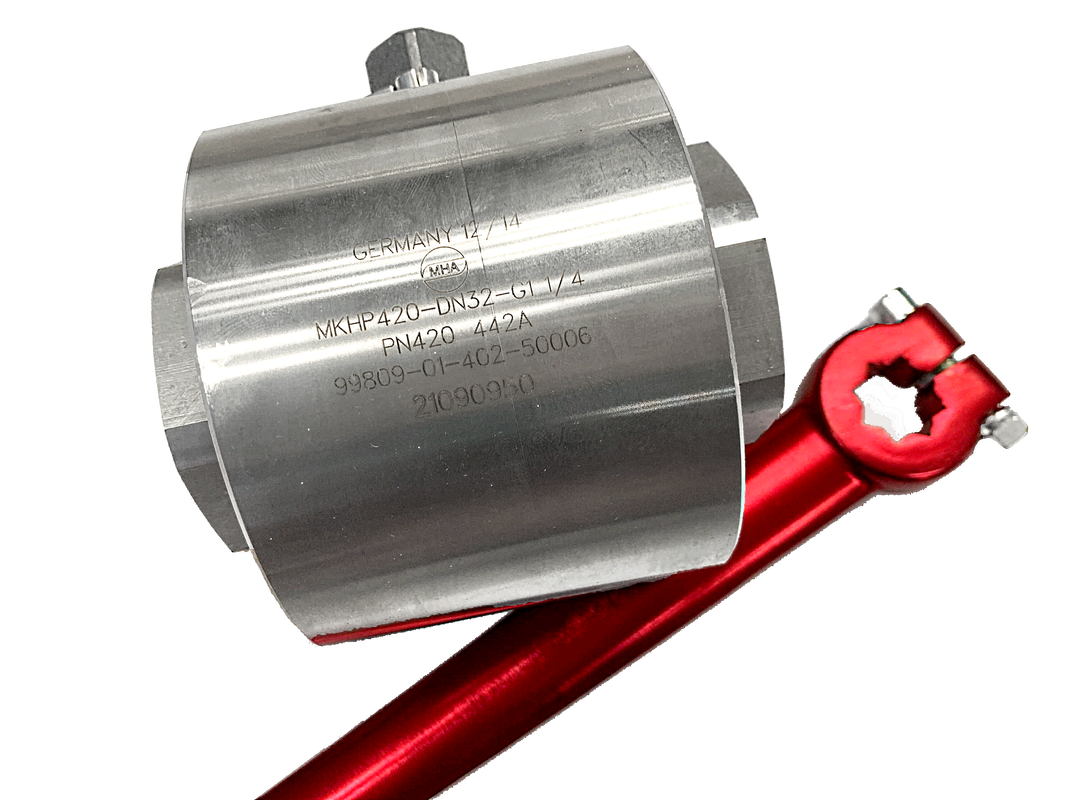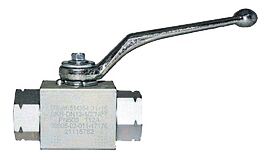High Pressure Ball Valve
High pressure ball valves are designed to control fluid in full open and full close position. Ball Valves are suitable for installation in piping systems with connections at the same pressure load and corresponding connections or between flanges of the same pressure load and the same flange connection.
It provides unrestricted flow of fluids and a way to shut off that flow using the attached handle. They are connected through robust stem and anti-blowout stem and are built to contain a different volume of pressure when the valve is the closed position.
It provides unrestricted flow of fluids and a way to shut off that flow using the attached handle. They are connected through robust stem and anti-blowout stem and are built to contain a different volume of pressure when the valve is the closed position.
Size |
|
Material and Working Temperature |
|
Working Pressure |
|
Connection Type |
|
What are ball valve
1. How does a ball valve work?
|
The ball’s holes are aligned with the flow when the valve is at opening position. When the valve handles on top turns to 90-degrees, the ball’s holes are at closing position, while the flow will automatically shut down.
As opposed to low pressure ball valves, high pressure ball valves are typically used to withstand high operating pressures and they keep streams of fluid and other media under control and allow the system fluid to pass through. High pressure ball valves are highly durable due to the high quality production and good performing after several cycles. |
2. Valve end connection types
|
It can withstand a pressure of up to 700 bars. It is subjected to the valve size. When the valve size goes bigger, the valves pressure goes lower. The size ranges available from 1/8" to 4". The common running sizes are from 1/2" to 2".
It has a different combination of valve material code that allows customize of temperature range. MHA valve recommended temperature range is -20°C to +100°C for steel material and -30°C to +100°C for SS316 valves material. |
There are several type of connection and selection of the connection is designed accordingly to system installation.
3. Ball valve specification
High pressure ball valve is made up of main parts which include the body, ball, ball seats and the steam and o-ring. There are a variety of material code description combinations from 4 digit below:
High pressure ball valve is made up of main parts which include the body, ball, ball seats and the steam and o-ring. There are a variety of material code description combinations from 4 digit below:
Digit 1 |
Body and adapters |
Digit 2 |
Ball and stem |
Digit 3 |
Ball Seat |
Digit 4 |
Sealing on stem and adapters |
The common carbon steel material code is 112A, 212A or 192A, while stainless steel material code is 442A. For gas application, the valve material code would be 44HA or 44aA. The indication of media and pressure temperature need to be identified before ordering. The unsuitability for certain material codes of ball valves that were selected by insufficient order specifications leads to exclusion of valve warranty.
4. What would you use a ball valve?
|
High pressure ball valves used in systems that demand a reliable shut-off power. Some fields of application are:
|
5. How do you install a ball valve?
To help you properly install a high pressure ball valve, please look at checklist before, during and after installation instruction below:
Checklist before installation:
Checklist during installation:
Checklist after installation:
Following these instructions will prevent leaks as fluids pass through. All operating instructions must be read carefully and observed prior to initial operation and assembly work must be inspected before. Professional execution is absolutely essential in every installation.
To help you properly install a high pressure ball valve, please look at checklist before, during and after installation instruction below:
Checklist before installation:
- A proper checking must be carried out to test whether the ball valve design corresponds to the required design and it is suitable for the intended use before installation.
- Ball valves installation may be carried out by qualified personnel and while the ball valve and pipe system are unpressurized. The pipelines must be introduced without tension to the fittings.
- Inspection for damage and contamination must be performed and all pipelines must be rinsed before installation.
- Residue in the pipelines can damage internal parts and this can result in malfunction or complete failure of valve performance.
Checklist during installation:
- Please ensure that no external tensions or vibrations are transferred to the ball valve.
- Use a suitable tool when the piping is screwed in the screw on the ball valve.
- By using suitable tools, overheating of the seals must be prevented on ball valves with welded ends.
- Flange end connection ball valve must be centered by screwing the counter flange before all the screws on the flange connection are tightened crosswise.
Checklist after installation:
- After the valve has been installed, switching must be carried out as a function test.
- No parts of the ball valve (e.g. body, adaptor, connection piece) may be released or screwed down.
- It must be ensured that the pipe system and ball valve are completely emptied, in case of media that are hazardous to health, flammable or explosive.
Following these instructions will prevent leaks as fluids pass through. All operating instructions must be read carefully and observed prior to initial operation and assembly work must be inspected before. Professional execution is absolutely essential in every installation.
6. How do you lock a ball valve?
Accessories application applies according to system requirement and it is only available upon request. It helps system to operate in the best solution. There are many accessories option as per below:
Accessories application applies according to system requirement and it is only available upon request. It helps system to operate in the best solution. There are many accessories option as per below:
|
- Pneumatic and electric actuator: This accessory allows for opening the ball valve and for controlling it. Kindly specify service medium, operating temperature and working pressure in order to configure the actuators for your application. While it is installed, the valve handle needs to be removed.
- Limit Switch: This is also needed to show the position of a valve. It indicates if the valve is open or close through





